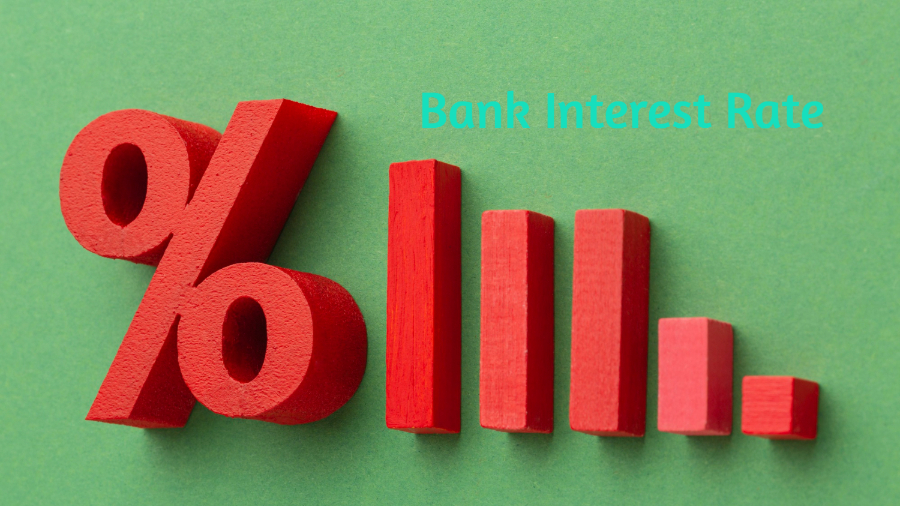KATHMANDU: Over the past month, the trend of declining interest rates has been halted. Until Poush , banks were engaged in fierce competition to lower interest rates. However, since Magh , this downward trend has stopped. For the month of Falgun , banks have decided to keep interest rates stable.
After a prolonged period of declining interest rates, stability has now set in for over a month. This has led many analysts to speculate that interest rates may soon begin to rise. Additionally, excess liquidity in banks and financial institutions has started to tighten. While excessive liquidity had accumulated due to insufficient loan disbursement earlier, the situation changed in Poush when banks disbursed loans worth NPR 8.7 billion , reducing the surplus liquidity.
According to data from the Nepal Rastra Bank (NRB) , during the first six months of the current fiscal year (Shrawan to Poush ), a total of NPR 265.56 billion in loans was disbursed. Of this, NPR 8.727 billion was disbursed in Poush alone , marking the highest monthly loan flow in over three and a half years. “The loan disbursement in Poush is as high as it was in Ashoj 2078 ,” stated Gunakar Bhatta , head of the NRB’s Economic Research Department.
Loan Expansion Accelerates
In the first six months of the current fiscal year, loan expansion reached 5.2% , compared to just 4% during the same period last year.
Excess liquidity, which had peaked at NPR 350 billion two months ago, has now decreased to around NPR 250 billion , according to Bhatta. “While excess liquidity in banks has slightly decreased, it does not indicate a liquidity shortage,” he clarified.
Similarly, the Credit-to-Deposit Ratio (CD Ratio) has risen recently. Three months ago, the CD Ratio stood at 78.5% , but it has now climbed to 79.5% . The CD Ratio reflects the proportion of loans issued relative to total deposits, with a policy cap set at 90% . An increase in this ratio indicates that loans are growing faster than deposits.
When the CD Ratio rises, interest rates tend to increase automatically. Factors such as higher loan demand, reduced deposit growth, and declining liquidity collected by the central bank suggest that interest rates are unlikely to decrease further in the near future.
However, bankers caution against expecting an immediate spike in interest rates. “Rates have already fallen significantly, so the downward trend has been halted, but predicting an immediate rise would also be incorrect,” said Santosh Koirla , President of the Nepal Bankers Association and CEO of Machhapuchchhre Bank.
Liquidity and Loan Trends
Despite the recent tightening of liquidity, the banking system still holds sufficient reserves to sustain lending for another year. “Even without fresh deposits, banks can comfortably issue loans worth NPR 600 billion , which is roughly equivalent to one year’s worth of current loan flows,” explained a senior banker. With deposit inflows expected to continue, they predict that interest rates will not rise significantly for at least one to one-and-a-half years.
“While loan demand is increasing, interest rates may rise slightly, but commercial banks will not double-digit interest rates on fixed deposits within the next year,” Koirla added.
Currently, interest rates are at historically low levels, prompting some NRB officials to argue that a modest increase may be necessary. Central banks worldwide typically align interest rate policies with inflation trends. “With inflation in Poush hovering around 5.5% , the interest rate on fixed deposits should ideally be at least 2 percentage points higher ,” remarked an NRB official.
Rising Loan Demand Signals Economic Activity
Loan demand has increased significantly in recent months, which bankers interpret as a sign of economic recovery. “The rise in loan demand over the past seven months indicates that the domestic economy is regaining momentum,” Koirla noted.
Capital expenditures, which typically decline during Poush/Magh , have also contributed to liquidity adjustments. Bankers expect liquidity to rebound after Chaitra/Baisakh as capital spending picks up again.
Remittances and Deposit Growth Slow Down
Remittances, a key source of liquidity in the banking system, have seen slower growth recently. In the first six months of the current fiscal year, remittances increased by only 1.1% in USD terms compared to the same period last year.
The slowdown in remittance growth is putting pressure on deposit growth. Combined with rising loan demand, analysts predict that the era of excessive liquidity may not last beyond one to one-and-a-half years .
Sectoral Breakdown of Loan Growth
An analysis of loan growth over the past five months shows a clear focus on imports. Loans for “Trust Receipts” (import-related) surged by 56.6% , reflecting a significant rise in import activity. According to customs data, imports grew by 7.06% in the first six months of the fiscal year, signaling increased domestic demand.
Other notable increases in loan categories include:
Margin-based loans : Increased by 26.3% .
Short-term loans : Grew by 3.1% .
Hire-purchase loans : Rose by 3.8% .
Cash flow loans : Increased by 4.7% .
Real estate loans (including personal housing loans) : Grew by 3.2% .
However, overdraft loans declined by 9.8% .
Investment Loans by Sector
In terms of investment loans, the following sectors saw significant growth:
Industrial production : Increased by 8.4% .
Construction : Grew by 7.7% .
Wholesale and retail trade : Expanded by 4.8% .
Transport, communication, and public services : Increased by 5.7% .
Service industries : Grew by 5.7% .
Consumer goods : Expanded by 5.8% .
Agriculture : Saw negligible growth of just 0.02% .
Key Takeaways
Interest Rate Stability : After months of declines, interest rates have stabilized, with potential for a gradual increase.
Loan Demand Surge : Rising loan demand signals economic recovery, particularly in imports and industrial sectors.
Liquidity Adjustment : Excess liquidity is tightening, but banks remain well-positioned to meet lending needs.
Remittance Slowdown : Slower remittance growth is impacting deposit inflows, adding pressure on liquidity.
Sectoral Focus : Loans are increasingly concentrated in imports, construction, and industrial production.

